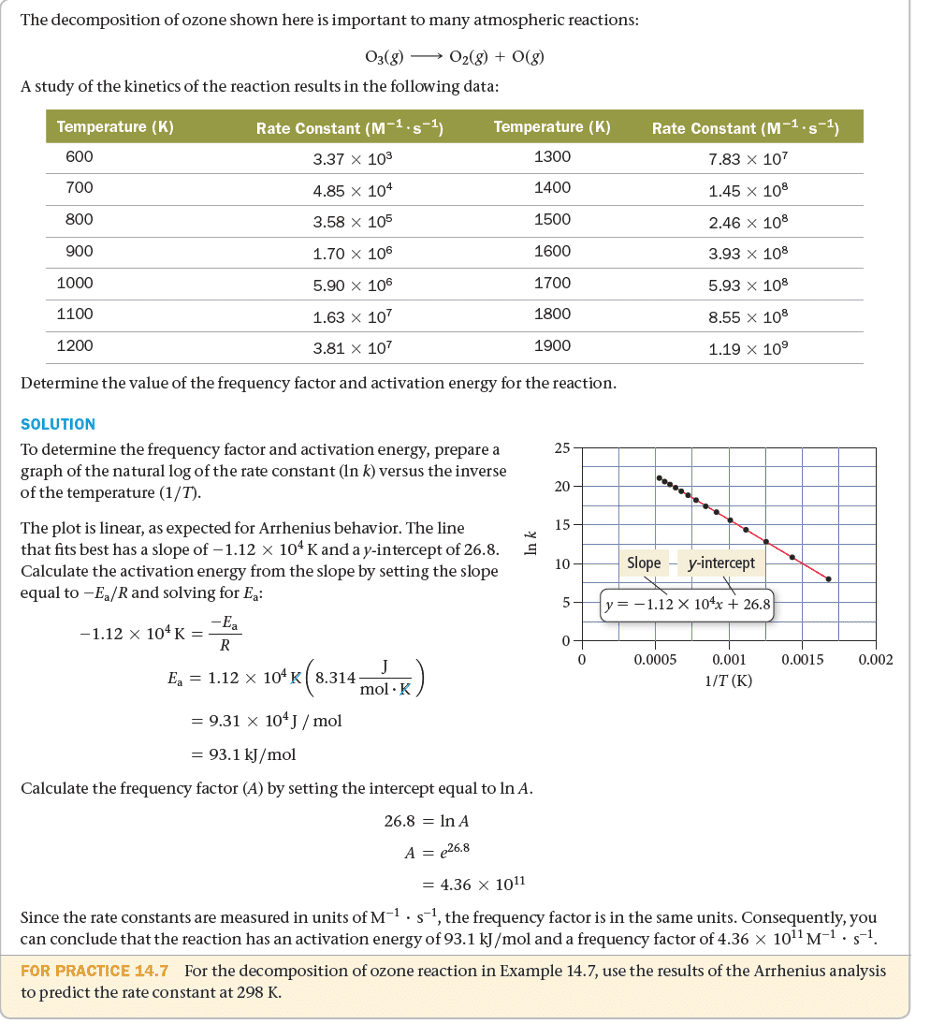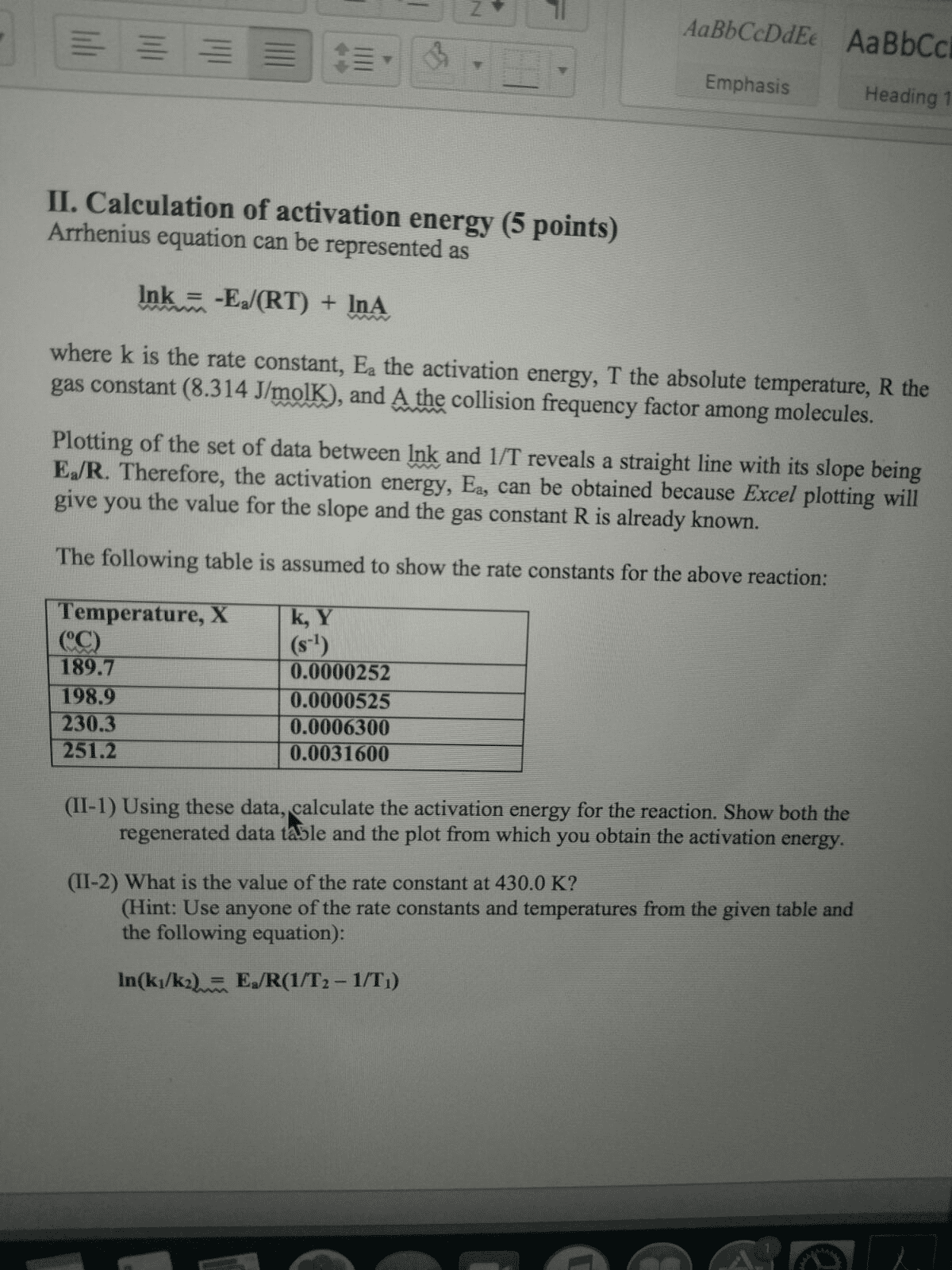CHEM 1214 Lecture Notes - Lecture 2: Limiting Reagent, Arrhenius Equation, Radioactive Decay
34 views3 pages
15 Sep 2016
School
Department
Course
Professor
Document Summary
Reaction order: rate law: rate = k[a]x[b]y. Lecture notes initial rate: rate of a reaction at t = 0, immediately after the reactants are mixed. Reaction order: experimentally determined number defining the dependence of the reaction rate on the concentration of a reactant. Rate law: equation that defines the experimentally determined relationship between reactant concentrations and the rate of the reaction. Overall order of reaction: sum of exponents for the concentration terms in the rate law. Rate constant (k): proportionality constant that relates the rate of a reaction to the concentration of reactants: example: ma + nb c. Rate law: rate = k [a]m [b]n: k = rate constant, m and n are the reaction orders with respect to reactants a and b, (m + n ) = overall order. Increasing concentrations increases collisions between reactants, leading to formation of products. Integrated rate law (1st order): mathematical expression describing the change in concentration of a reactant with time.
Get access
Grade+
$40 USD/m
Billed monthly

Homework Help
Study Guides
Textbook Solutions
Class Notes
Textbook Notes
Booster Class
10 Verified Answers
Class+
$30 USD/m
Billed monthly

Homework Help
Study Guides
Textbook Solutions
Class Notes
Textbook Notes
Booster Class
7 Verified Answers
Related textbook solutions
Chemistry: Structure and Properties
2 Edition,
Tro
ISBN: 9780134293936
Basic Chemistry
5 Edition,
Timberlake
ISBN: 9780134138046
Principles of Chemistry Molecular Approach
4th Edition,
Tro
ISBN: 9780134112831
Principles of Chemistry Molecular Approach
3rd Edition, 2014
Tro
ISBN: 9780321971944
Chemistry: Structure and Properties
2nd Edition,
Tro
ISBN: 9780134293936
Chemistry: A Molecular Approach
3rd Edition,
Tro
ISBN: 9780321809247
Chemistry: A Molecular Approach
5th Edition,
Tro
ISBN: 9780134874371
Principles of Chemistry: A Molecular Approach
4th Edition,
Tro
ISBN: 9780134895741
Chemistry: The Central Science
14th Edition, 2017
Brown
ISBN: 9780134414232



